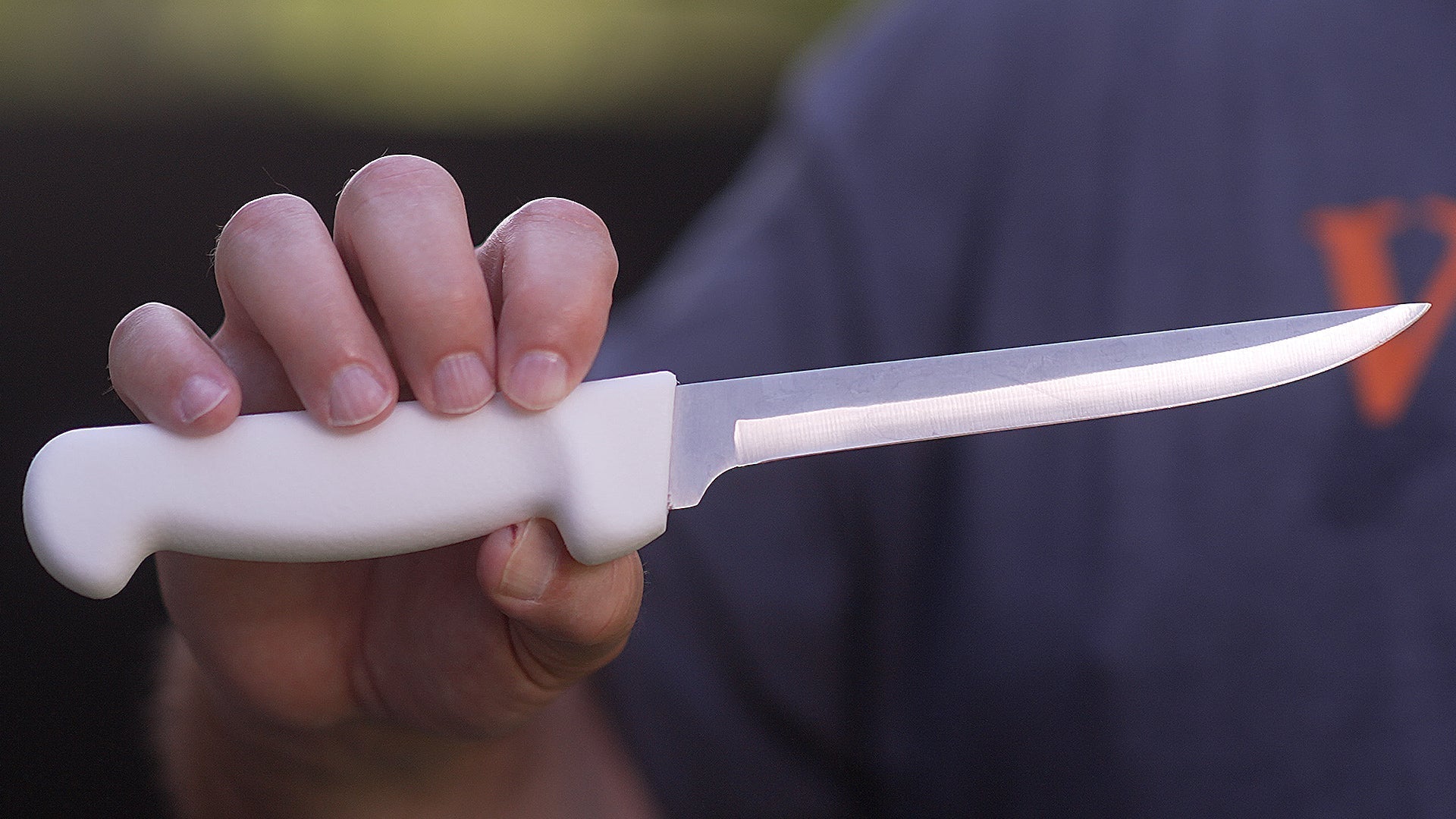
Apr 09 , 2025
How to Choose the Best Fillet Knife
When it comes to filleting fish, having the right knife can make a world of difference. A high-quality fillet knife ensures clean, precise cuts, enhancing your efficiency whether you're on a fishing trip, in the kitchen, or processing game in the field. This is particularly important for anglers and hunters who need to efficiently process their catch and maximize the yield from every fish.
Choosing the best fillet knife involves considering factors like blade material, flexibility, and handle comfort. A well-designed fillet knife allows you to glide through flesh with ease, saving time and effort. Options known for their exceptional cut quality and durability, such as the Mila 8” and Mila 6” offered by Wiebe Knives, stand out in the market. Our knives provide the precision required to tackle various tasks seamlessly.
Components of the Best Fillet Knives
When selecting a fillet knife, several key components can significantly impact your cutting experience. These include the material and flexibility of the blade, the blade length, and the design of the handle. Each plays an essential role in ensuring precision, comfort, and safety.
Blade Material
For a reliable fillet knife, focus on the carbon content in the stainless steel. Together, the sharpness of carbon and the rust resistance of stainless steel offer a durable and efficient cutting tool. High-carbon stainless steel holds its edge well, minimizing the need for frequent sharpening. It’s ideal for achieving precise cuts and ensuring your knife remains in excellent condition over time. Wiebe Knives’ high-quality blades are made from 3CR13 Stainless Steel, HRC52-56 -honed and stropped in the US for a precision edge.
Blade Flexibility
A flexible blade is crucial for filleting fish, allowing you to follow the natural contours and bones precisely. This flexibility enables you to make clean cuts close to the bone without waste, which is especially important for delicate fish. Whether you are cleaning a small trout or a larger salmon, a flexible blade ensures that each fillet is cut perfectly. This is particularly useful when aiming for thin, delicate slices.
Blade Length
The length of the blade can vary according to your needs. Common lengths are 6”, 7”, and 9”. A 6-inch blade is excellent for smaller fish, offering control, flexibility, and precision. A 7-inch blade is versatile, suited for medium-sized fish, while a 9-inch blade handles larger fish, providing ease through thick fillets. Choose a length that fits your primary catch and cutting style for a comfortable and efficient experience.
Handle Design & Grip
The handle should offer a non-slip grip to prevent accidents during use. An ergonomic design is essential for comfort, especially during extended use. Features like a molded grip ensure that the knife sits perfectly in your hand, reducing strain and improving control. Safety is paramount, and an excellent grip provides confidence and nimbleness, helping you maneuver the knife accurately even when your hands are wet. For example, Wiebe knives feature ergonomic, non-slip handles designed for this very purpose.
Selecting the Best Fillet Knife
Choosing a fillet knife involves considering the type of fish, its use, and whether you prefer manual or electric options. Understanding these factors can make your filleting experience more efficient and enjoyable.
Best Fillet Knife for Freshwater vs. Saltwater Fish
For those who fish in freshwater, a knife with an ideal blade size and flexibility is crucial. When targeting species like walleye, bass, or trout, a medium-length blade provides precision without sacrificing control. If you're angling in saltwater and dealing with redfish, snapper, or tuna, a longer blade is essential. Look for corrosion-resistant materials to withstand the harsh marine environment, ensuring the longevity of your investment.
Manual vs. Electric Fillet Knives
Manual fillet knives offer superior control and precision, which is why many anglers prefer them. Wiebe fillet knives are a popular choice for their precision and balanced design, making them perfect for intricate cuts. On the other hand, electric fillet knives can save time, especially when dealing with larger catch hauls. However, they can be bulkier and require power sources. Evaluate your fishing context to decide which type suits you best.
Fillet Knife for Outdoor vs. Home Use
If you're frequently on the go, seek compact and portable options for convenient outdoor use. The lightweight design enhances ease of transport without compromising performance. For home use, a larger, professional-grade knife can handle extensive processing tasks efficiently. Whether you're cleaning panfish outdoors or preparing walleye at home, having the right knife for your environment optimizes your filleting process. Consider quick cleaning and storage to further enhance your experience.
Why Choose a Wiebe Fillet Knife?
Quality and Precision
When you choose a Wiebe fillet knife, you’re opting for exceptional quality and precision. The blades are crafted from 3CR13 stainless steel, honed in the US to achieve a sharp edge that ensures smooth cuts every time. This enables you to fillet fish or prepare wild game with ease and professional results.
Flexibility and Accuracy
The knife’s design ensures it is both flexible and accurate. Its ability to contour makes it easy to achieve perfect slices, whether you’re working with delicate fish or tougher meats. This flexibility, combined with precision, is what makes Wiebe Knives stand out for both novice and experienced users.
Comfort and Ergonomics
Comfort is key, and the Wiebe fillet knife delivers with its ergonomic, non-slip grip. The handle is molded specifically for ambidextrous use, ensuring that it fits comfortably without slipping, even when wet. This feature allows you to work with confidence and ease, reducing fatigue over long periods.
Lightweight and Easy to Clean
With a total length of 13 inches or less and weighing under 4 ounces, Wiebe fillet knives are lightweight enough to handle all day without adding strain. Additionally, our knives clean easily, making maintenance a breeze, so you’re always ready for your next cutting task—whether at home or in the field.
